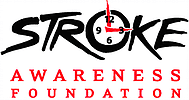 Stanford University’s Rock Center for Corporate Governance, in connection with leadership advisory firm Heidrick & Struggles International, Inc., reports a weighty statistic based on findings from their 2010 Survey on CEO Succession Planning. Over half of today’s companies are unable to immediately designate a successor to their CEO. Why? Lack of succession planning.
Stanford University’s Rock Center for Corporate Governance, in connection with leadership advisory firm Heidrick & Struggles International, Inc., reports a weighty statistic based on findings from their 2010 Survey on CEO Succession Planning. Over half of today’s companies are unable to immediately designate a successor to their CEO. Why? Lack of succession planning.
Chuck Toeniskoetter, however, can’t relate. “I’m a nut on succession planning. It’s a must,” says Toeniskoetter, Chairman and CEO of Toeniskoetter Construction and Chairman of Toeniskoetter Development. He speaks not only from experience as a business owner, but as a stroke survivor.
While vacationing in Bear Valley in December 2000, Toeniskoetter suffered an ischemic stroke at age 55. After downhill skiing in the morning, he was looking forward to an afternoon of Nordic skiing when suddenly he lost use of the right side of his body. “The brain just disconnects. I had no control,” he says. “When there’s no pain, you don’t know what’s going on.”
Luckily for him, the search and rescue team nurse on duty that day did know. An ambulance and helicopter were immediately dispatched. In 2000, emergency medical services protocol dictated that non-trauma patients be transported to the closest hospital for treatment. Toeniskoetter’s nurse on scene demanded otherwise, insisting that he be flown to Sutter Roseville Medical Center which was recognized for stroke care. She identified the signs of stroke and knew that his window for full recovery was closing.
The pilot finally agreed to flight redirection, an uncommon practice at the time, and Toeniskoetter was admitted to Sutter Roseville with just enough time to receive tPA, an intravenous, clot-dissolving drug that must be administered within three hours of stroke symptoms onset. Toeniskoetter was released less than two days later, returned to work within three weeks and was 99 percent recovered within 18 months.
As the owner of high-profile companies, Toeniskoetter wondered how his employees would manage the news of his stroke. “Everyone reacted very positively. Everything kept functioning [because] we had a succession plan. It worked,” Toeniskoetter says. He also speaks to the importance of giving top management and employees room to do their jobs. “We’re always afraid to give away the things we’re good at. People do rise to the occasion,” he says. “That was a valuable lesson.”
Just as stroke was a life-changing event for Toeniskoetter, his experience helped shape new policies and procedures for treating stroke patients. In 2003, Toeniskoetter co-founded the Stroke Awareness Foundation (SAF) with Silicon Valley business leaders Pat Dando and Chuck Hoffman. SAF was formed with the purpose of helping local hospitals to become certified stroke centers, to establish redirection protocols for ambulances to transport stroke patients to certified stroke centers, and to educate people to recognize the signs of stroke.
“The goal is for stroke victims to have the same opportunities that I did,” Toeniskoetter says.



